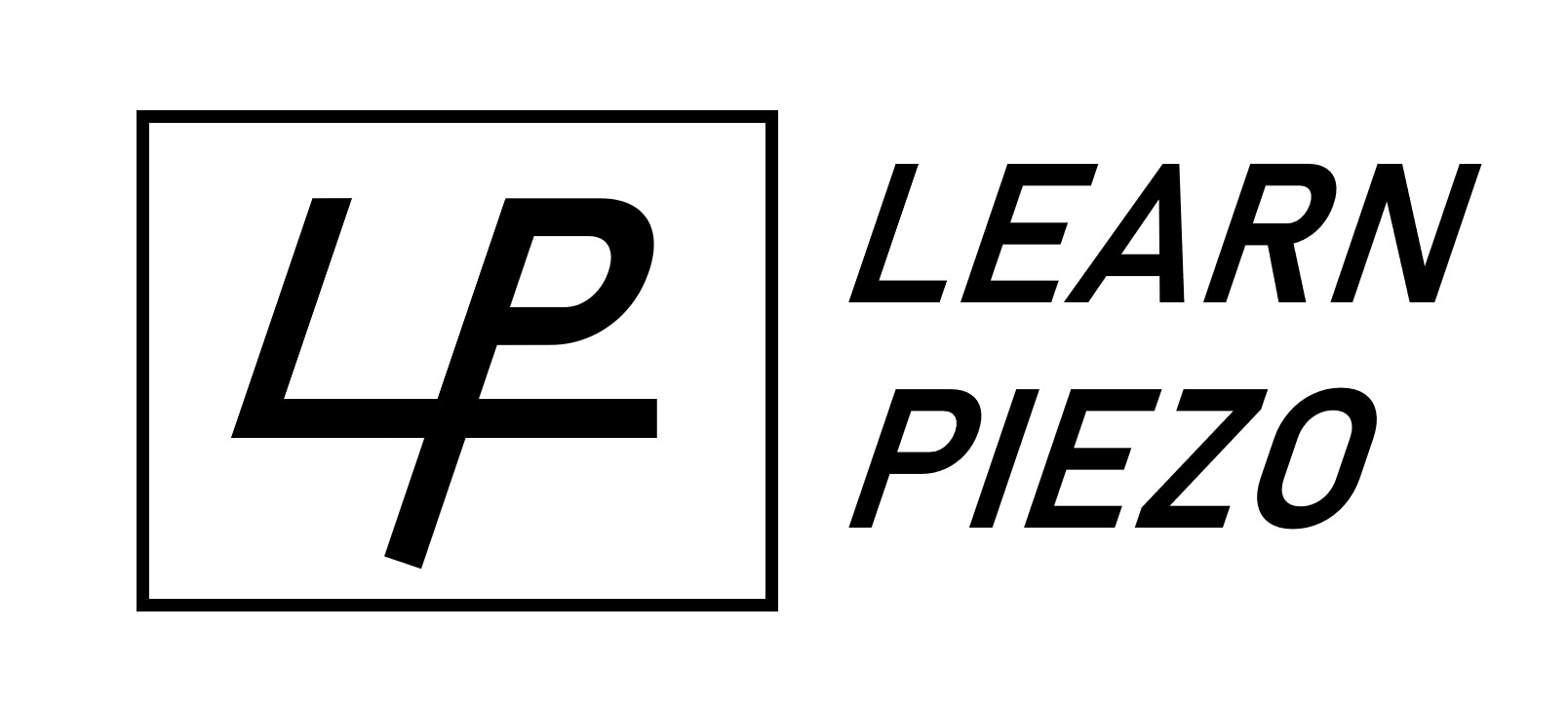Learn Piezo Lectures
Learn Piezo Video Lectures aim to provide a means for learning the fundamentals of piezoelectric materials and their applications by providing a video lecture series on the subject.
Contact me for QnA or to inquire about consulting on your ultrasonic device application. CLICK HERE to schedule a call or contact me at husain@learnpiezo.com
Lecture 2: Mechanical and electrical properties of materials
Lesson Length (1 hour and 4 min)
In this lecture we introduce several concepts regarding mechanical and electrical materials properties and quantities. You may already be familiar with these topics. That being said, I feel a review of this material is necessary to form a solid foundation before discussing the electromechancial properties of piezoelectric materials
Mechanical properties and quantities
Part A: Essential definitions of force and stress
Electrical properties and quantities
Lecture 3: Macroscopic Piezoelectric Properties
In this lecture we are introduced to the different parameters and properties that describe the electromechanical behavior of piezoelectric materials.
(98min)
Contact me for QnA or to inquire about consulting on your ultrasonic device application. CLICK HERE to schedule a call or contact me at husain@learnpiezo.com
Lecture 4: Microscopic Origins of Piezoelectricity
In this lecture, we discuss piezoelectricity from a microscopic perspective. The topics which will be covered are spontaneous polarization, domain wall, polarization reversal/reorientation, and domain wall contributions toward piezoelectric material properties.
Lecture Length (74 min)
Lecture 5: Losses in Piezoelectric Materials
This lecture covers the loss treatment of piezoelectric materials. Losses in materials are covered in general, and then the treatment of mechanical, dielectric, and piezoelectric losses in piezoelectric materials are detailed.
Lecture 6: Frequency Response of Piezoelectrics
In this lecture, we will cover the behavior of piezoelectric materials to alternating electric fields and stress. The effect of mechanical resonance will be discussed. Also, equivalent circuit analysis will be provided. Finally, the integration of all of the loss factors will be completed for the forced frequency response.
Lecture 7: Piezoelectric Actuators and Sensors
In this lecture, we discuss what piezoelectric materials are capable of. How much displacement can we get? How much voltage can we generate? What can we do to increase the performance? What are the limitations? All these questions and more will be answered in this lecture.
Contact me for QnA or to inquire about consulting on your ultrasonic device application. CLICK HERE to schedule a call or contact me at husain@learnpiezo.com
Lecture 8: Laboratory Demonstrations
In this lecture, we learn about piezoelectric materials firsthand in the lab.
Lecture 9: Thermodynamic Explanation of Properties
In this lecture, we will discuss how energy (thermodynamics) can be used to understand piezoelectric material properties.
Lecture 10: Impedance Analyzer Characterization
PowerPoint File
In this lecture, we learn how to characterize a piezoelectric material or transducer using an impedance analyzer, one of the most common instruments used to measure piezoelectric material properties.
Contact me for QnA or to inquire about consulting on your ultrasonic device application. CLICK HERE to schedule a call or contact me at husain@learnpiezo.com
Lecture 11: Piezoelectric Heat Transfer
In this lecture, we learn about fundamental concepts of heat transfer, we apply them to heat generation in piezoelectric materials, and finally experimental demonstrations using a thermal camera are shown to solidify concepts.
Here is the paper which I describe in Part E and Part F
Characterization of Mechanical Loss in Piezoelectric Materials Using Temperature and Vibration Measurements http://onlinelibrary.wiley.com/doi/10.1111/jace.12998/abstract
Lecture 12: Energy Harvesting
In this lecture, we will go over all of the basics of energy harvesting using piezoelectric materials.
Contact me for QnA or to inquire about consulting on your ultrasonic device application. CLICK HERE to schedule a call or contact me at husain@learnpiezo.com
Lecture 13: COMSOL Simulations
In this lecture, we will go over how to use the piezoelectric modules of COMSOL.
Lecture 14: Piezoelectric Drive Theory
In this lecture, we will go over the general principles on how ultrasonic transducer are driven.
Project Ultrasonic Cleaner
In this project, we will build an Ultrasonic Cleaner from basic components easily found online
Part A: Introduction to DIY Ultrasonic Cleaner
(PPT)
PART B: Finding the resonance frequency
(PPT)
PART C: Impulse resonance frequency
(PPT)
PART D: Capacitance (AC and time constant methods) (PPT)
Part E1: Programming the PicoScope
(PPT)
Part E2: Defining PicoScope Python Functions
(PPT)
Part E3: Automated Measurements Through Looping
(PPT)
Part E4: Graphical User Interface - Picoscope
(PPT)
Part F: Ultrasonic cleaner assembly
(PPT)
Project 1 Part G: Low Power Analysis - Ultrasonic Cleaner
(PPT)
Project 1 Part H1: Audio Amplifier used to Drive Transducer
(PPT)
Project 1 Part H2: (Continued) Audio Amplifier Used to Drive Transducer (see last PPT)
Question and Answer
Some questions submitted through email and teleconference have made their way here. Ask away!
|
DF
